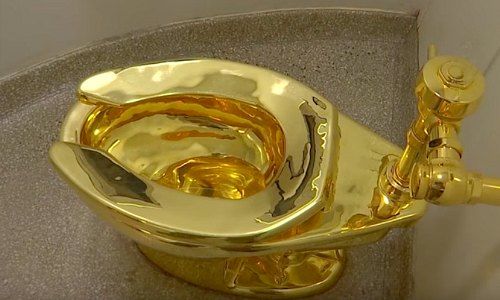Macallan, Marie Antoinette, Hockney
Knight Frank, a property specialist, compiles the index based on data from Art Market, the Fancy Color Research, the Historic Automobile Group, Rare Whisky 101, and Wine Owners. Luxury buyers tend towards assets they feel an affinity for – they are seeking fun as much as return.
Sotheby's set a record for the priciest pearl ever auctioned when a diamond-and-pearl pendant once owned by Marie Antoinette (pictured below) went for $37.5 million in a bidding war nine months ago. Christie's sold the world’s most expensive bottle of whisky for $1.5 million (a 60-year-old bottle of Macallan adorned with artwork by Valerio Adam).

(Image: Sotheby's)
And fine art, of course. There is the confusing tale of the Saudi Arabian crown prince and Leonardo da Vinci’s «Salvator Mundi», which fetched $450 million. Separately, a 1972 pool scene by David Hockney in November set the record for most expensive work by a living artist – $90 million – sold at auction.
Punishing Cash
The rich have always loved surround themselves with beautiful, exclusive, rare «objéts» – what is different now? The answer at least partly lies in a punishing regime on cash – another beloved asset class for the wealthy.
«Clients are becoming more interested in alternatives to cash in view of negative interest rates, and are also taking on a bit more risk,» according to Deloitte partner Ralph Wyss. «There is more interest in a wider horizon of tangible objects of value, especially fine art.»
To be sure, this isn’t new: the wealthy have fled towards cash since the financial crisis of 2008/09, and never really veered. The deepening of negative interest rates has simply accentuated the more than ten-year trend, according to several wealth industry and luxury asset experts.
Trimming the Tree
A wealthy European family had gold Christmas tree ornaments manufactured: the pricey baubles are a good store of value, they are useful (once a year) and sturdy. Diamonds – tiny, easy to transport, even across national borders without detection – are another common caprice of the ultra-rich, according to experts.
Art houses have also seen an upswing, underpinned by the emergence of a swath of wealthy buyers from Asia and the Middle East. Possessing and displaying fine art lends social credence while also providing a smart place to stow money.
«Families of older wealth tend to combine the idea of art patronage with investing in something of value,» Deloitte’s Wyss said. «For newer money, it’s largely a straightforward investment with the hope of preserving or increasing wealth.»
- << Back
- Page 2 of 2































